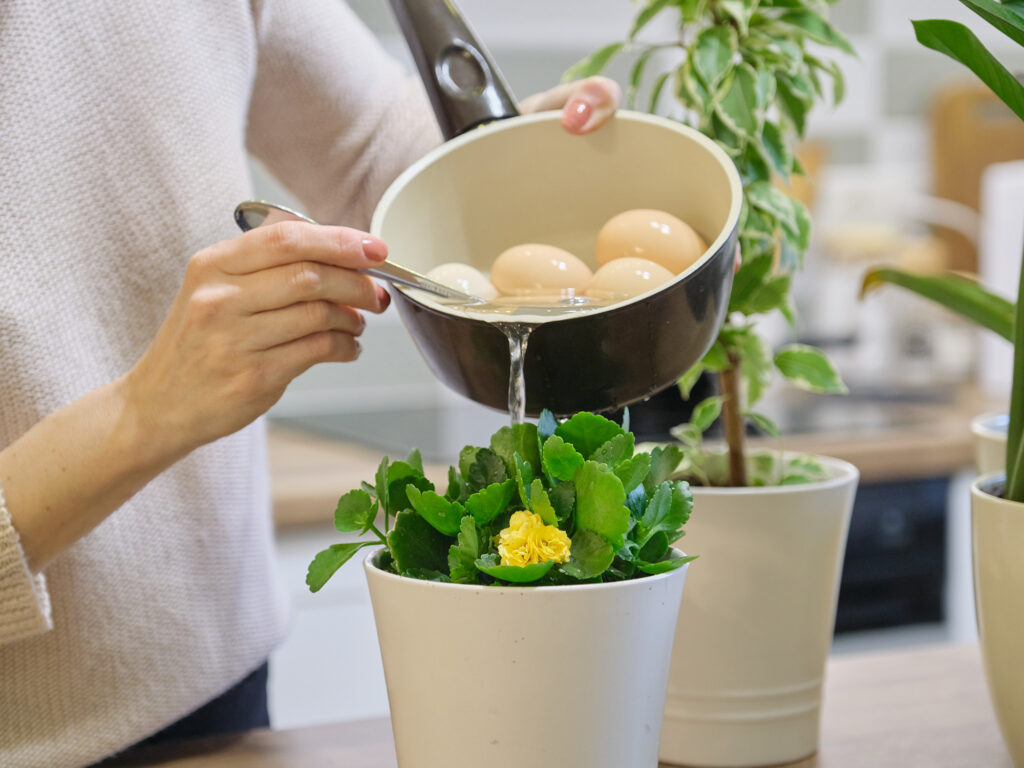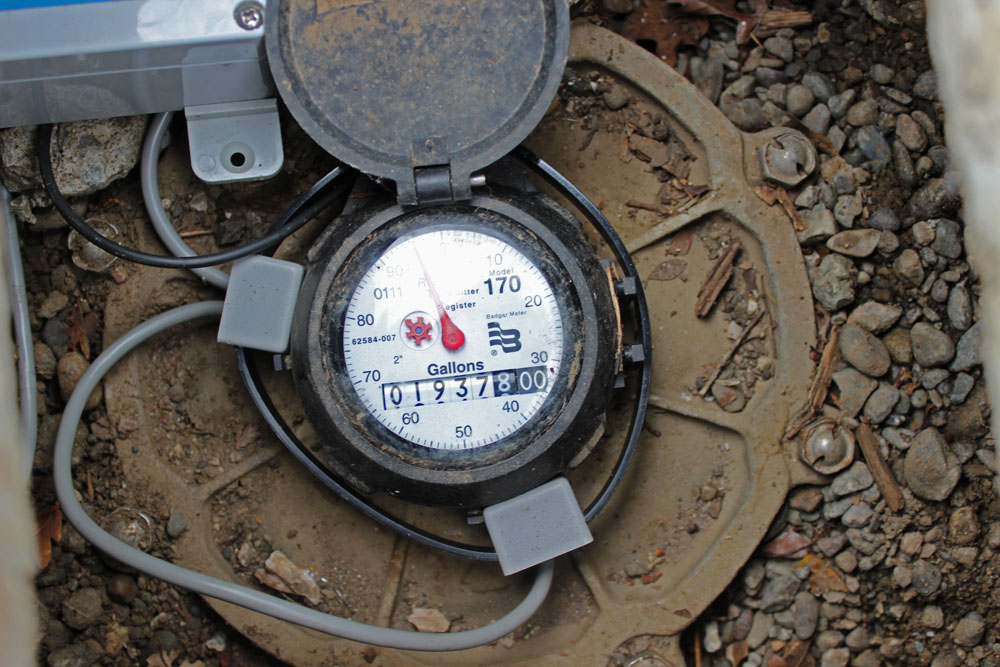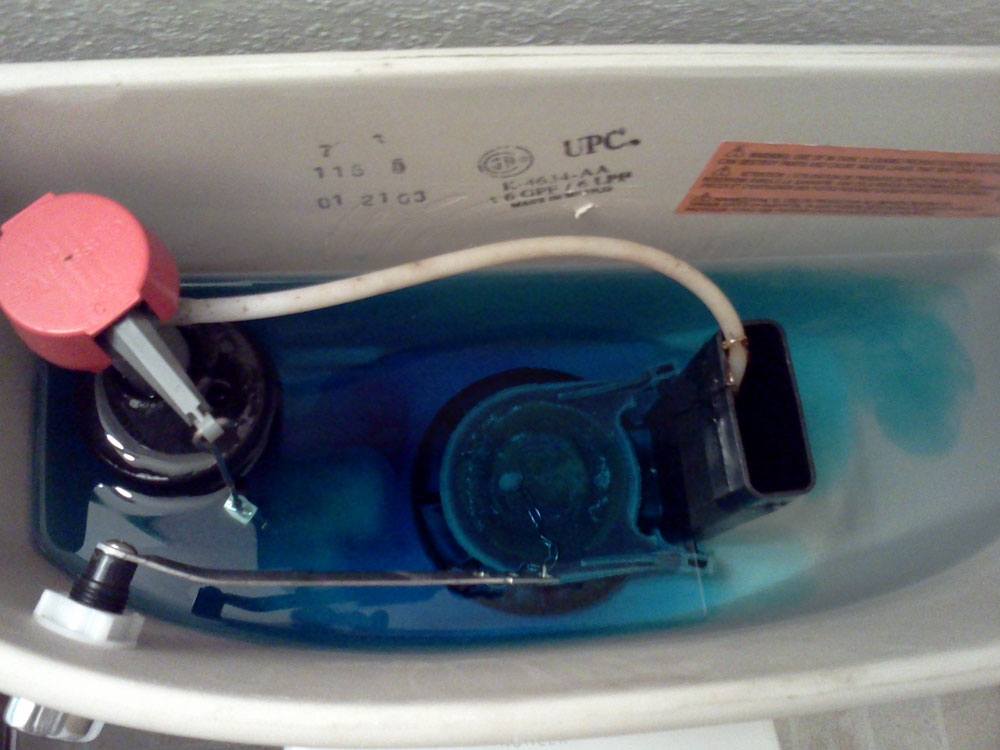Water Saving Tips

Conserving Water Is Easy
Water-efficient technologies and products consume less water while having little or no impact on your lifestyle. Not only is saving water the right thing to do, it can also save you money. Saving water may also lower your sewer and energy bills.
Water
Saving
Tips
Use Your Water Meter To Find Leaks
Your water meter is an important conservation tool. It not only measures the amount of water you use, but can also tell you if there is a leak in your plumbing.
1. Locate Your Water Meter
Your water meter is generally located near the curb in front of your home in a concrete box usually marked “water” or in a meter pit with a cast iron lid. Carefully remove the lid by using a tool such as a large screwdriver or pliers. Visually examine the area around the meter to make sure there are no harmful insects or other animals.

2. Read Your Water Meter
Water meters measure volume in gallons or cubic feet. One cubic foot = 7.48 gallons and 100 cubic feet = 748 gallons. Water charges are typically based on 100 cubic feet or on 1,000 gallon units. In the meter shown the reading is taken from the figures shown under the words cubic feet. The meter reads 81710.03 which is the total number of cubic feet of water recorded since the meter was installed. If the utility bills in units of 100 cubic feet they would read this meter as simply 817.
3. Test For Leaks Using Your Water Meter
- Take a reading and wait 10 minutes. Be sure to stop all water use inside and outside the home, including ice makers. When the 10 minutes are up, take another reading of the meter and compare it to the first reading. If the reading has changed, there is a leak.
- Water meters also have a low flow indicator. This is usually a small, triangle or wheel that spins when water is flowing through the meter. Look for movement on the low flow indicator while all water used has been stopped. If there is movement, water is still flowing through indicating a leak.
- If the water meter has a digital display, a message indicating a leak will flash.
Indoor Water Conservation Tips
Appliance Types And Usage
- Purchase a front-load washing machine that uses 40% less water.
Check with your local water provider for rebates. - Run the dishwasher and clothes washer with full loads only.
Don’t Let Water Run
- Don’t let water run while shaving, brushing teeth or rinsing dishes.
- When you are washing your hands, don’t let the water run while you lather.
Check & Fix Leaks
- Listen for dripping faucets and toilets that flush themselves. Fixing a leak can potentially save hundreds of gallons each month.
- Check your toilet for leaks
- Read your water meter to assess usage and find hidden leaks.
Learn How
How To Check Your Toilet For Leaks

- Remove the tank lid. Carefully remove the tank lid and lay it flat on the floor to prevent it from falling over and breaking. Condensation on the underside of the tank lid may drip as you are removing the lid.
- Check the water level in the tank. If the water level is above the manufacturers indicated water line, make adjustments to correct the water level. If adjustments were made, reset the toilet by flushing it and allowing the tank to refill and stop on its own.
- Drop a dye tablet (available from your water provider) or several drops of food dye into the tank. Do NOT flush. Wait 15 minutes. If you have more than one toilet to test, repeat Steps 1 through 3 for each toilet while you wait.
- Check the water in the bowl for color. If the color appears in the bowl, there is a leak. Replacing the toilet’s flapper valve will likely stop the leak. To ensure proper flush performance, be sure the replacement flapper meets the toilet manufacturers specifications for your toilet model.
Outdoor Water Conservation Tips
Convert Your Lawn To A Garden
Lawn isn’t native to our area and uses a lot of water. Sheet mulching is a simple technique for converting lawn to a low water use garden and nurturing the soil.
Watering Schedule
Water between midnight and 6:00 a.m. to reduce water loss from evaporation and wind. Water your lawn and garden in 2 short cycles rather than one long one. Watering to a depth of 4 to 6” will encourage deeper healthier roots and allow the plants to go without water for longer periods of time.
Use our Irrigation Scheduling Tool to help you adjust your irrigation.
Irrigate By Hand
Target your water use by hand watering exactly in the spots that need it.
Many plants go dormant—stop growing—at different times of the year and therefore need less water. Use a hose to hand water plants as needed. Be sure that the hose has a self-closing hose nozzle. While the flow rate for a hose is dependent on many factors such as hose diameter and water pressure, a typical garden hose without self-closing hose nozzle will flow at 10 to 16 gallons per minute. If you have a lawn, participate in a local “cash for grass” rebate program available in some areas of the region and get rebate for replacing it with low water-use plants.
If you must use an irrigation system:
- Check if using an irrigation system is allowed – due to the drought, some jurisdictions allow only hand watering
- Use drip irrigation rather than sprinklers.
- Inspect and tune-up your sprinkler system monthly.
- Manually activate watering when and where water is needed.
- Adjust your irrigation system to prevent water from running off your lawn, onto your sidewalks and down the gutter.
Cleaning Walkways
Use a broom, not a hose, to clean your driveway, deck or patio. Washing a sidewalk or driveway with a hose uses about 50 gallons of water every 5 minutes.
Washing Vehicles
Use a bucket and a hose with an automatic shut-off nozzle when you wash the car, or take your car to a carwash that recycles. Save water by extending the time between car washes or take your car to a Sonoma Green Car Wash.
Pool Covers
Cover pools and hot-tubs to reduce evaporation.
Tree Irrigation
The California drought has residents concerned about how to save water. In fact, some homeowners have opted to turn off their outdoor watering system, and it’s not uncommon to see brown lawns. However, not watering a landscape means that many trees will slowly decline in health and could die. While lawns and flowers are easily replaced, a large shade tree takes many years to become established. Learn more here.
Gardening During a Drought
You may be wondering whether or not to bother with a food garden in a drought year. One option is to eliminate the edible garden for a while, but, there are water-wise actions that can be employed for a successful harvest. Learn more here.
Graywater
Graywater is wastewater from showers, bathtubs, bathroom sinks, and clothes washing machines that can be used in your landscape. Graywater does not include water from toilets, kitchen sinks, or dishwashers. Graywater can be routed to your landscape to help meet your irrigation needs. Please note, a laundry to landscape system does not require a permit, however altering plumbing or adding a pump will require a permit.
Check out the recorded webinar series with Daily Acts and Graywater Action to learn more about the different types of graywater systems.